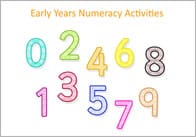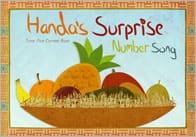Validating Children’s Thinking Time
I attended a conference today with UFA (University of the First Age) which was extremely thought-provoking in many ways. Whilst I was there, I shared with the group a technique which I use with early years. The response from my fellow delegates reminded me just how important this type of process is and I felt perhaps it would be interesting to share.
This particular technique is about validating children’s thinking processes. I am a definite advocate for the importance of giving children time to think, reflect and respond to questions. My interest in this was initiated by ECAT (Every Child A Talker), which I was involved with a few years ago. As a practitioner I am passionate about empowering children and respecting their voice.
As adults, we are often guilty of expecting children to answer lots of questions, in a very short amount of time. If a child takes a while to think about a response, we may assume they don’t understand or are not going to answer and ask them something else, or move away from the conversation. In fact, it takes children longer to process the question and formulate an answer. I believe strongly that this thinking process is as important as the answer itself.
The following technique, which is a tool for promoting and valuing thinking time, was stolen from a teacher, who shared it with me a long time ago. I hope that she will be please that this excellent and extremely simple concept is continuing to be shared.
Alright, intro over. I’ll get on with it now….
– Thinking Thumbs and Finished Fingers.
The way the Thinking Thumbs and Finished Fingers works is to encourage children to show their ‘thinking thumbs’ (like giving a thumbs up) whilst they are thinking of their responses and sorting out their thoughts in their heads. Once they are clear and have a response ready, they show their Finished fingers (pointing their forefingers/wiggling their fingers) to demonstrate that they are ready to share.
Yes, it’s really that simple.
Having tried and tested this with a range of young children, I am an absolute advocate for its success. Children feel less rushed to respond and so the quality of their responses is better. This can be adapted to work in whatever way suits you and your setting, but it’s a lovely idea and, having spoken about it today, I felt that it would be nice to share. Please do let me know what you think and if you try it out yourselves.
All the best, as always.
Lindsay
www.lindsayjanehunter.co.uk
Popular Teaching Resources
Stay Up To Date
Sign up for our newsletter and we’ll let you know when we create new early years resources.





